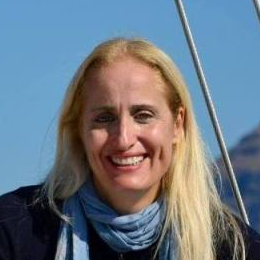Submarine Volcanic Hazards: Ancient and Modern Perspectives
A special issue of Geosciences (ISSN 2076-3263). This special issue belongs to the section "Natural Hazards".
Deadline for manuscript submissions: closed (30 November 2018) | Viewed by 29726
Special Issue Editor
Interests: seafloor mapping; tectonics; submarine volcanism; 3D reconstruction; physical geography; morpho-geodynamics
Special Issues, Collections and Topics in MDPI journals
Special Issue Information
Dear Colleagues,
Over 75% of the volcanic activity on Earth occurs underwater; and recent heightened unrest from many submarine volcanoes has raised serious concerns regarding the level of risk posed to local communities. The overall goal of this Special Issue of Geosciences is to evaluate the potential of combining innovative and emerging technologies to enable breakthrough developments in understanding the impact of disastrous submarine volcanic hazards on society. Specifically, this Special Issue aims to provide an outlet for rapid, widely-accessible publication of peer-reviewed studies promoting an integrated approach to underpin new concepts (e.g., for risk monitoring protocols or civil hazard planning), next-generation commercial products (e.g., for in situ sensors or imaging instrumentation), and innovative services (e.g., for education/training or early-warning systems for society) for submarine volcanoes.
This Special Issue aims to cover, without being limited to, the following areas:
Identification of submarine volcanic hazards such as: Volcanic eruptions, volcanic earthquakes, submarine landslides, hydrothermal emissions and volcanogenic tsunamis.
Exploration of optimal monitoring technologies and state-of-the-art methods, providing new insights for further exploration and potential exploitation of submarine volcanoes, which are hosting significant hydrothermal deposits, minerals and fauna.
Volcanic crisis management, general public awareness and preparedness, for a better understanding of the hazards and impacts of submarine volcanoes.
Prof. Paraskevi V. Nomikou
Guest Editor
Manuscript Submission Information
Manuscripts should be submitted online at www.mdpi.com by registering and logging in to this website. Once you are registered, click here to go to the submission form. Manuscripts can be submitted until the deadline. All submissions that pass pre-check are peer-reviewed. Accepted papers will be published continuously in the journal (as soon as accepted) and will be listed together on the special issue website. Research articles, review articles as well as short communications are invited. For planned papers, a title and short abstract (about 100 words) can be sent to the Editorial Office for announcement on this website.
Submitted manuscripts should not have been published previously, nor be under consideration for publication elsewhere (except conference proceedings papers). All manuscripts are thoroughly refereed through a single-blind peer-review process. A guide for authors and other relevant information for submission of manuscripts is available on the Instructions for Authors page. Geosciences is an international peer-reviewed open access monthly journal published by MDPI.
Please visit the Instructions for Authors page before submitting a manuscript. The Article Processing Charge (APC) for publication in this open access journal is 1800 CHF (Swiss Francs). Submitted papers should be well formatted and use good English. Authors may use MDPI's English editing service prior to publication or during author revisions.
Keywords
- submarine volcanoes
- hazards
- monitoring protocol
- SoA technology





